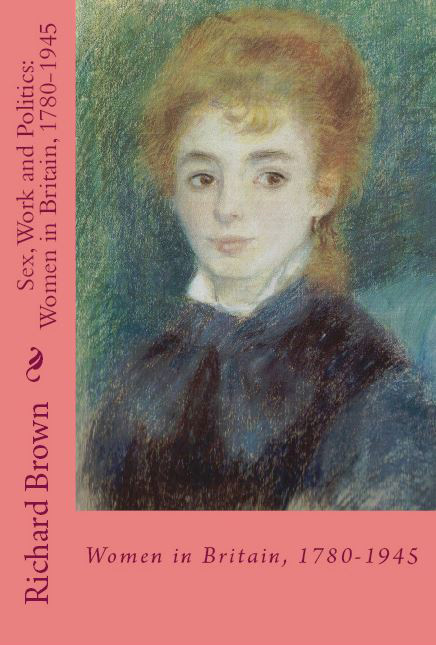Women in Britain 1780-1945
Review

Sex, Work and Politics: Women in Britain 1780-1945, Richard Brown, Authoring History, second edition, 2014, 616 pp. ISBN 1500143529
This second extended edition published a mere two years after the first edition of 2012 indicates not only the success of the first edition but also the continuing proliferation of books on women's history. It allows the author to extend the book's chronological limits back to the 1780s and forward to the end of the Second World War in 1945, adding two new chapters considering the role played by women after they received the vote in 1918 and 1928 and the place of women in Britain's imperial sphere after 1780. More generally wider utilisation of contemporary newspapers has enabled Richard Brown a highly experienced author and teacher to position women more firmly within their varied milieus in his lucid and richly nuanced text. Moreover, the author boldly acknowledges on the opening page of this new edition that ‘telling the story of, for instance, Florence Nightingale or the Pankhursts remains the best way of getting students to engage with and enjoy the subject and from that all else follows' and the remainder of his analytical and discursive narrative amply demonstrates his skills as an engaging and informed guide to his subject.
In a succinct introductory chapter, Brown provides an overview of the emergence and development of women's history informed by reference to the key landmarks in the history of the genre and also addresses evidential issues. He strongly affirms that ‘gender history is not incompatible with exploring women in history', maintaining that in order ‘to understand female experience and identity' it is necessary ‘to investigate gender relationships between women and men and to explore men's identities and their ability to achieve and exercise patriarchal power over women as well as over each other'. This holistic perspective infuses his approach throughout this book, which draws on regional studies by younger scholars such as Paul Atkinson on the cultural incentives to limiting the number and spacing of pregnancies in Yorkshire towns such as Bradford, Middlesbrough and Leeds, though not on Denise Bates's revisionist approach to women in coalmining in West and South Yorkshire. However continental perspectives are supplied through his collaboration with a French scholar at the Sorbonne and we learn, for example that the terminology of feminism was first employed in France some twenty-two years before it appeared in English, whilst a penultimate chapter provides an imperial dimension, distinguishing carefully between colonies in Africa and Asia and white settler colonies in Australasia, where he concludes that ‘the situation of British women was substantially different'.
His detailed, informative and stimulating survey is illustrated with numerous carefully selected images from a range of relevant primary sources including the Illustrated London News, Punch, and archival photographs, although the provenance is not supplied for every illustration. Students and teachers will, however, welcome the depth and extent of this lucid and engaging text, which is highly commended.

